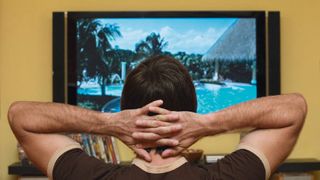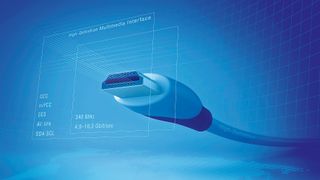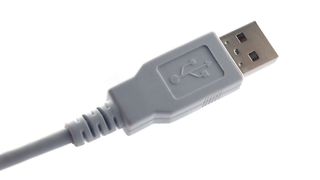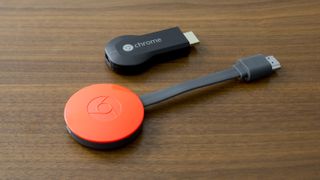How to connect your phone to the TV

Looking to connect your phone with the TV? Our homes are more crowded with gadgets than ever, and knowing how to easily share content between devices can save you a lot of hassle.
Linking up your telly with your smartphone or tablet opens up a number of handy ways to stream and cast media. You might want to get up some holiday snaps for the family to see, stream a YouTube clip or video file in higher resolution, or keep playing the Netflix show you were watching on your commute on the big screen.
Most TVs nowadays are smart TVs – that is, they’ll come connected to internet apps like Netflix, YouTube and the like already – while you can also use streaming sticks or set top boxes to get up most of the video or broadcasting content you would usually want to access.
But if you’re getting files specifically from your phone or tablet, want to use an app that’s only available on mobile, or would rather keep a play session on your phone going – rather than get up the respective app on the TV – we’ve got the answers for you here. Read on for how to connect your phone to the TV, either over cabled connection or wirelessly.
Connect to the TV with HDMI
The most reliable way to get your phone hooked up to the TV is with an HDMI cable. Practically every TV will have an HDMI port of some sort, which is used to transfer both audio and video from the same source. (Some TVs are starting to get HDMI 2.1, but you only need the more common HDMI 2.0 standard if you’re not handling 8K content.)
Your phone won’t have an HDMI port, but there are handy adaptors that will bolt HDMI ports onto your phone’s USB Type-C, micro USB, or lightning ports.
Some Android tablets will have mini HDMI or micro HDMI ports, which can connect directly to HDMI over a single cable. Whatever port you’re hoping to connect from, make sure your cable is compatible with that connection.

Connect to the TV with USB
Seems straightforward enough? Most smartphone charging cables end with a USB connector, to easily link up with laptops or power adaptors – but if your TV has a USB port, this is a simple way of getting your files onscreen.
You're technically transferring files to open on the TV, rather than transmitting your phone's display, though, so this is better for looking at your own photos and videos than anything else.
Like on a laptop or desktop PC, you should then be able to head to ‘Source’ on your smart TV platform, and select USB. You should get a prompt on your smartphone screen that enabled you to transfer files (rather than simply charge the device through your TV).

Connect to the TV with wireless casting (Android)
If you don’t want to fuss over any wires or cable, there’s always the option to use casting.
Casting is the process of wirelessly streaming content from your phone or tablet, by connecting to the same WiFi network as your television. Smartphone apps like AllCast will be able to cast direct to the TV for you, though most modern Android phones (Android 4.2 onwards) and Windows devices (Windows 8.1 onwards) will support the Miracast casting standard.
With Miracast, you simple head to your phone’s Display settings, check under Cast, and select Enable Wireless Display to check for nearby devices to cast to.
You can also use a streaming device like the Google Chromecast or Roku Streaming Stick, which plug into your TV’s HDMI port, and can be connected to wirelessly by devices running Android 4.4.2 and above.

Connect to the TV with AirPlay (iOS)
On Apple devices, you’ll be able to use AirPlay: Apple’s proprietary technology for casting audio and video wirelessly.
Naturally, AirPlay is designed to work between Apple devices only, but if you’re sending content from your iPhone or iPad to your Apple TV, AirPlay will have you sorted. If both devices are connected to the same WiFi network, they’ll automatically detect each other, and you’ll be able to select the AirPlay connection in your phone’s settings, the same way you would with Bluetooth for connecting to wireless headphones.

Comments
Post a Comment